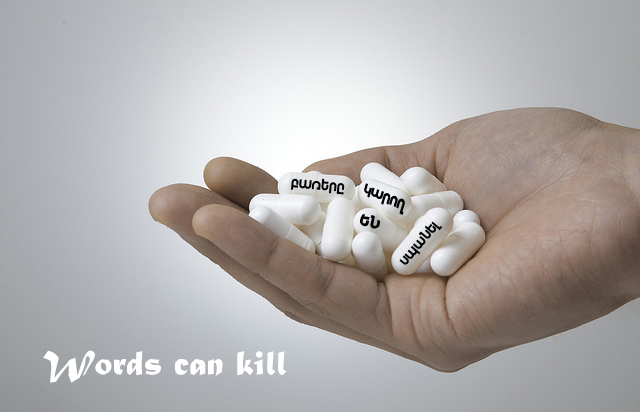Bulling is unwanted, aggressive behavior among school aged children and youth that involves a real or perceived power imbalance and has the potential to be repeated over time.
The specialists identify the following types of bullying:
Physical: hitting, spitting, pushing, taking or breaking someone’s things, making mean or rude gestures is hurting a person’s body or possessions;
Verbal: teasing, threatening, name-calling, inappropriate sexual comments, taunting, threatening to cause harm;
Psychological / Social: excluding someone out of the group on purpose, spreading rumors, intimidating, embarrassing someone in public;
Sexual: touching, assault, exhibitionism, etc;
Cyberbullying: sending or posting text messages, threats, indecent photos or hurtful material through internet or other forms of technology.
Bullying is common, but it should not be viewed as a normal part of child growth. It can affect everyone and may lead to serious, lasting problems (including impacts on mental health, substance use, and suicide) that may persist into adulthood.
That’s why it is important to address such behavior in complex – family, school and community efforts and investigate it from both people who bullies, who is bullied and bystanders’ perspectives.
Children who are bullied are more likely perceived as:
- different from their peers, such as being overweight or underweight, wearing glasses or different clothing, being new to a school, or being unable to afford what is considered “cool”,
- weak or unable to defend themselves,
- depressed, anxious, or have low self esteem,
- less popular than others and have few friends,
- LBGT youth, people living with disabilities, and socially isolated youth.
However, even if a child has these risk factors, it doesn’t mean that they will be bullied.
This risk can be increased further when these kids are not supported by parents, peers, and schools.
Children who are bullied are more likely to experts point out a few simple steps that parents and other adults can use to prevent and stove off this phenomenon.
1. Be attentive to children – warning signs of bullying are those:
- unexplainable injuries,
- lost or destroyed possessions,
- frequent faking illness /headache, stomach ache, etc,
- loss of interest in schoolwork, in activities they used to enjoy, decreased academic achievement,
- offishness, avoidance of social situations,
- feelings of helplessness or decreased self esteem, talking about suicide.
Specialists are convinced that children really do look to parents for advice and help on tough decisions.
2. Sometimes spending 15 minutes a day on a routine talk may change things:
Ask such questions as: Did any good thing happen in the school?
What about a bad one? How it looks like your lunch time?
How is on the way to school? What are you doing then?
Answers to such questions may help you find out about kid out of home life.
3. Speak about bullying straight and clear.
Ask what is bullying for them, what do they think about bullies, who, why and whom people bully, have they witnessed bullying, how they felt, what they will do, if and etc. These questions don’t have true or false answers, but the honest answer may give a parent real perceptions about bullying risk.
Afterwards, explain them what bullying is, how it may express, and how to stand up to it safely or report when you are a witness.
Watch some videos on bullying issues and discuss them.
4. Give tips how to resist it:
- Laugh it off– this is best working variant if joking is easy for you.
- Look at the bullying person and tell to stop in a calm, clear voice.
- If speaking up seems too hard or not safe, walk away and stay away.
- Never fight back. Find an adult to stop the bullying on the spot.
The following tips may help you to stay safe in the future, too.
- Talk to a trustful adult trust. Never keep your feelings inside. Adults can help to stop it, while telling someone can help you feel less alone.
- Stay away from places where bullying happens.
- Stay near adults and other children. Most bullying happens when adults aren’t around.
5. Be active in child school life:
Attend to school events, establish contacts with teachers, classmates parents, etc-simple ways that parents can use to assure kids that they are not alone in addressing any problems arise.
Studies showed that children are not eager to talk about bullying especially with adults because of some reasons. Kids may not want adults to know what is being said about them, whether true or false. They may also fear that adults will judge them or punish them for being weak.
Bullying can make a child feel helpless- no one cares or could understand them. While some of them may want to handle it on their own to feel in control again.
So in order to help them, avoid such mistakes:
- Suspending or expelling students who bully does not reduce bullying behavior.
- Conflict resolution and peer mediation don’t work for bullying. Bullying is not a conflict between people of equal power who share equal blame. Facing those who have bullied may further upset kids who have been bullied.
- Group treatment for students who bully doesn’t work. Group members tend to reinforce bullying behavior in each other.
- Never tell the child to ignore bullying.
- Do not blame the child for being bullied: no one deserves to be bullied.
- Never advice a child to physically fight back against the bully.
- Parents should resist the urge to contact the other parents involved. It may make matters worse. School or other officials can act as mediators between parents.
Maria Abrahamyan
Used source: stopbullying.gov




